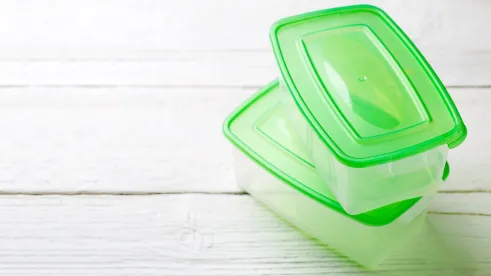Question
What is the definition of a "colorant" and the definition of an "additive" in (EU) No 10/2011? Commercially purchased pigments (colorants) can often contain additives that are incorporated as part of the pigment production process for various reasons. Are such "colorant additives" required to be listed in EU10/2011?
Answer
The Plastics Regulation, (EU) No 10/2011, defines “additive” as “a substance which is intentionally added to plastics to achieve a physical or chemical effect during processing of the plastic or in the final material or article; it is intended to be present in the final material or article” (Article 3.7). Accordingly, colorants are considered additives but the Regulation excludes colorants from the requirement that additives be on the Union (or positive) list of authorized substances for use in plastic layers in plastic materials (Article 5.2(b)). The Regulation further states that colorants may be used in the manufacture of plastic layers in plastic materials and articles subject to national law (Article 6.2).In other words, colorants used in plastic materials and articles are not subject to the positive list requirements of the Plastics Regulation, although, if they are listed in the Plastics Regulation (as is the case with carbon black), then it would be advisable to demonstrate that they meet applicable restrictions or specifications to ensure that the additive is suitably pure for its intended use.
While colorants are excluded from the requirement to be on the Plastics Regulation’s positive list, some restrictions set out in the regulation may also indirectly apply to colorants used in plastic food contact materials and articles because they set purity specification or migration limits pertinent to a determination of the safety of the finished article or material. For example, Annex II of the Plastics Regulation sets out that plastic materials and articles shall not release primary aromatic amines (PAAs) in a detectable quantity into food, and prescribes a detection limit a 0.01 mg/kg for the sum total of PAAs (apart from those specifically listed in the Plastics Regulation’s positive list). Further, Annex II of the Plastics Regulation also sets specific migration limits for barium, cobalt, copper, iron, lithium, manganese, zinc, aluminium and nickel in the final plastic materials or articles. Additionally, the Plastics Regulation imposes an overall migration limit (OML) of 10 mg/dm2 (or 60 mg/kg in certain circumstances) from the final food contact article and contributions from colorants must be considered when determining compliance with the OML.
For more information, see the PackagingLaw.com article, The Regulation of Colorants Intended for Food Contact Applications in the European Union.



 />i
/>i

